American Street Photography of the 1940s–50s
The roaming photographer, camera slung around her neck or gripped in a hand, walking city streets, sitting in a café, invisible, but watching, capturing, finding enduring, candid, illustrative moments, is one of the medium’s most beloved, and unique, genres. Though by broad definition unmediated, street photography offers a powerful way in which a maker might develop a visual language or power social change. Street photography is in this way closely aligned with photojournalism, and in its mid-century form was created in reaction to and with the influence of Lewis Hine, Henri Cartier-Bresson, Walker Evans, and the massively impactful social documentary work of the FSA.
Our May 27, 2021 auction of Photographs & Photobooks offers a number of photographers associated with this period of street photography.
Helen Levitt
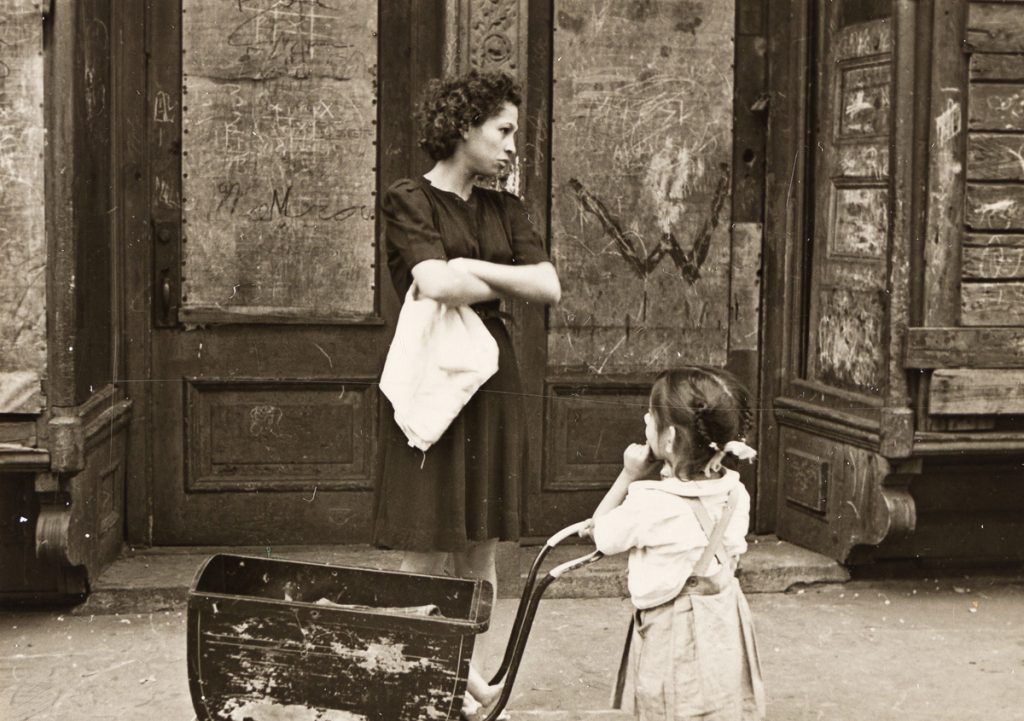
Born in Brooklyn, Helen Levitt is identified almost exclusively with the New York City streets, where she lived and worked for decades. Capturing both the drama and beauty of urban street life (where the stoops and city blocks are treated as extensions of the home), Levitt’s impeccable compositions are remarkable for their sense of spontaneity and continuous motion. They are images of living, of the chance encounters and dramas between neighbors, of the mysterious moments that permeate everyday life, of the gritty realities of life in New York. Particularly known for capturing children and women with sensitivity and humor, Levitt’s perspective is one of respectful equality with a quick and flawless finger on her trigger. Though her images were published in magazines, appeared in museum exhibitions (including a solo show at the Museum of Modern Art in 1943), and gained the accolades of her peers (including James Agee, who wrote the introduction for one of the few volumes of her work published during her lifetime, A Way of Seeing), Levitt was intensely private, and remained lesser known to the public until late in her life.
Louis Faurer
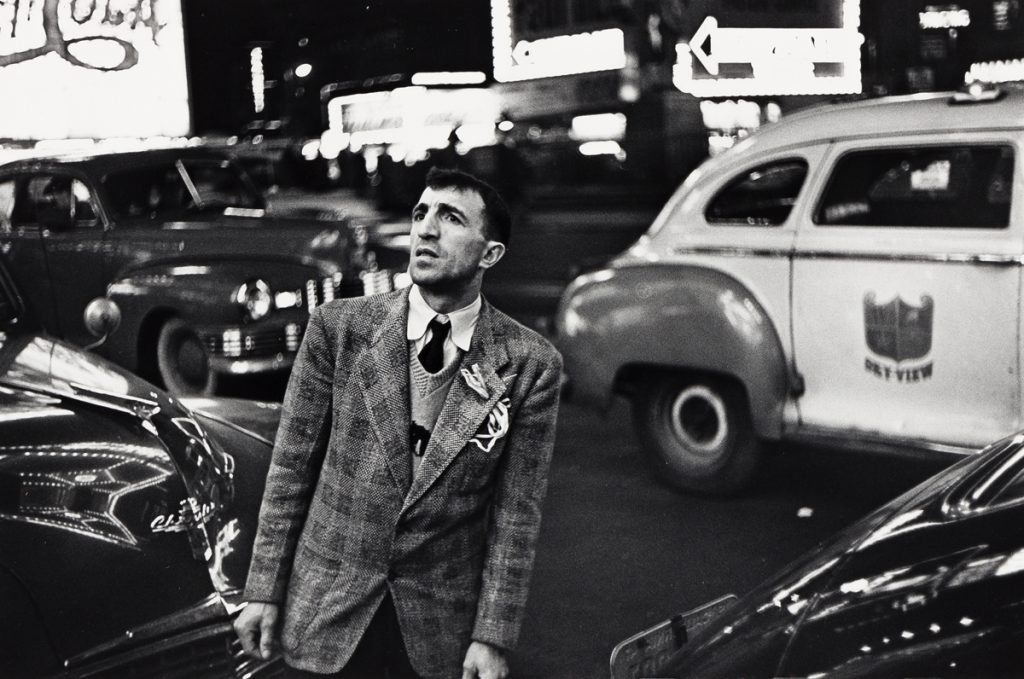
A man stands in stark relief against gleaming, rushing cars behind him. His stillness is heightened by their motion, the expression on his face unknowable, unbearable, questioning, all-seeing. The brilliant neon backdrop speaks to modernism, to a teeming, alive city, and yet he is still, tie and coat seeming to hold his body close. A photographer’s photographer, Louis Faurer is sometimes loosely described as a figure in the so-called New York City School, which also includes Robert Frank (Faurer’s friend of more than 50 years), William Klein, Saul Leiter, Diane Arbus, and others featured here. Like Faurer, many of these practitioners operated with the massively influential ideological documentary photography of the FSA behind them. They depoliticized that visual language, and worked largely in urban environments, and specifically New York City, examining the social landscape during and post-WWII. Faurer’s imagery, which even today remains unknown to many, offers a view of a complex individual within a broader post-war economic optimism. This quality is not unique to him, though Faurer’s distillation of the individual, offering both intimacy and a sense of shared humanity, is unique within his contemporaries and shows a photographer in complete control of his narrative.
Related Reading: 5 Portrait Photographers To Inspire Your Collection
Robert Frank
Robert Frank, the towering, influential figure of the twentieth century, reorganized and reimagined street photography. He is indelibly associated with the inequity, grit, beauty, and paradox of the American social landscape, these themes explored repeatedly through images captured in his groundbreaking “shoot from the hip” style, one that eschewed classically composed, carefully lit imagery. His approach built on the street work that came before, fully realizing and capitalizing on a snapshot aesthetic, and which would fully inform everything that came after. Both an outsider and an invisible observer, Frank captured American life with an immediacy and rawness that forced the viewer to a reckoning.
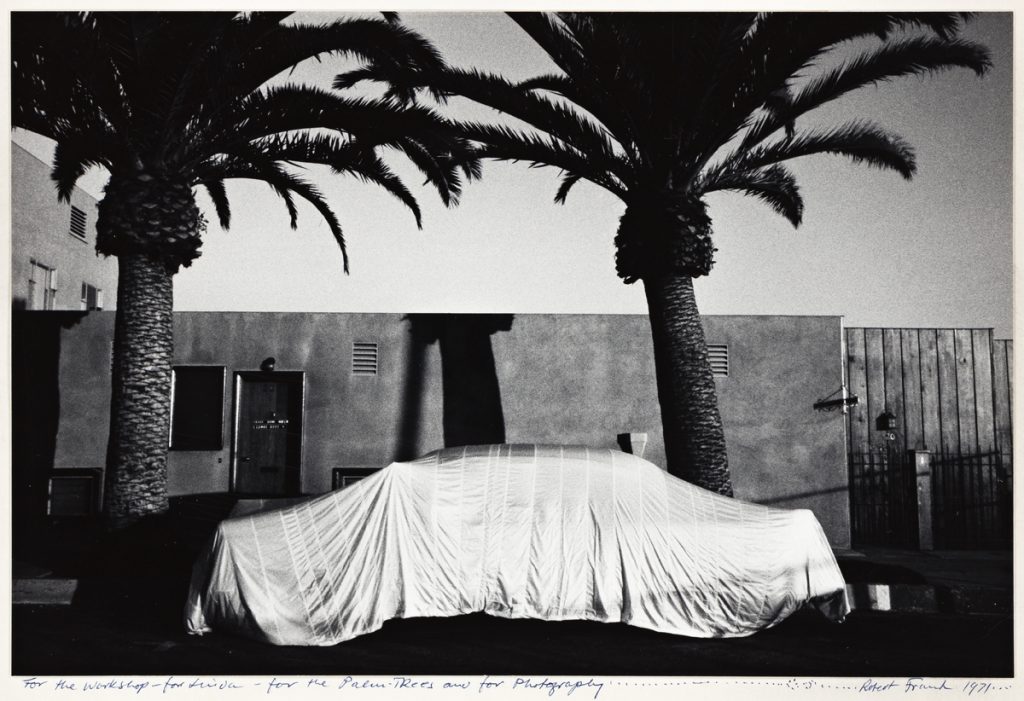
Here, however, it is the absence of human figures that speaks to the viewer. The suggestion of humanity in the carefully covered car, the traces of loving sensuality inherent in the draped form, the clear identification of the person with the car, all tell us as much about the human condition (as Frank sees it) as an intimate, formal portrait could. The brilliant California light is both harsh and sensual and the car mysterious but also unquestionably a car, its Americanness and its luxuriousness also totally without question. The economic comfort of the 1950s is as much a theme here as the individual relationship with the vehicle, of an America that is and will be always on the road, always roaming, always looking, much like Frank himself.
Do have an example of street photography we should take a look at?
Learn about how to consign to an auction, and send us a note about your item.

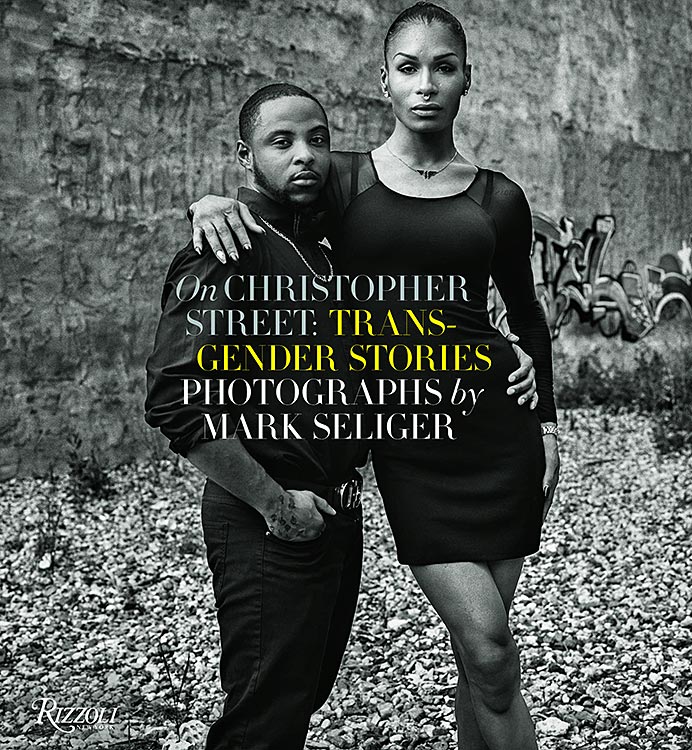
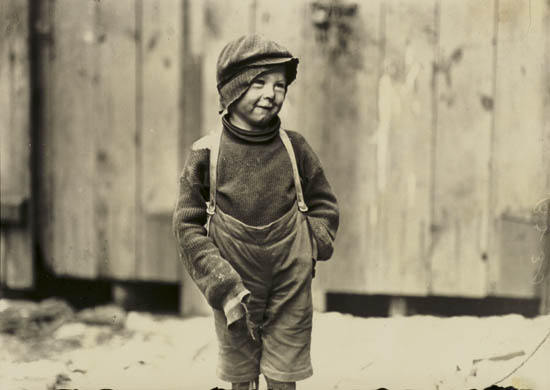














![Grace Meschery-McCormack shares about two copies of Fernando de Rojas’s ‘La Célestine,’ including a limited edition copy illustrated by Pablo Picasso.
At auction April 22. Learn more about the works at the link in our bio.
#Rarebooks #rarebookdealer #antiquarianbooks #auctions
_______________________________________
Music Credit:
Schubert - Piano Quintet in A major ‘The Trout’, D. 667 - IV. Andantino – Allegretto
Music provided by Classical Music Copyright Free on Youtube [https://tinyurl.com/visit-cmcf]
Watch: • Schubert - Piano Quintet in A major ‘...]](https://scontent-iad3-1.cdninstagram.com/v/t51.75761-15/491443494_18499096345036585_5935932878956098058_n.jpg?stp=dst-jpg_e35_tt6&_nc_cat=107&ccb=7-5&_nc_sid=18de74&_nc_ohc=QlZg0o3Vx4oQ7kNvwHlPDYS&_nc_oc=Admkx5CH3-5gNl9kFtE07uGBWzC1TrU8LutoXTk30m77fiWC0m2_oIjIUSQBbJE8mA8&_nc_zt=23&_nc_ht=scontent-iad3-1.cdninstagram.com&edm=AM6HXa8EAAAA&_nc_gid=Pe1umN91MEXpkwcZIAoyzA&oh=00_AfL0aLte8jNzcTguOVsdcdqJNkw1tTNFwy_v2TCIwQ11Pw&oe=6828BE91)
